I remember being that kid who’d sneak a flashlight under the covers to finish just one more terrifying tale, heart racing with every page turn. Over 80% of middle-grade students say they love reading scary stories, according to a recent survey of 100 students. That same pull toward stories that give you goosebumps doesn’t fade with age—it just gets more sophisticated.
Look, I get it. Finding good halloween stories can feel overwhelming. You’ve got everything from creepy old house stories to the kind of psychological stuff that messes with your head for days. Maybe you need something for a campfire. Maybe you’re writing your own scary stories. Or maybe you just want something that’ll keep you up at night.
For writers looking to craft their own spine-chilling tales, understanding the fundamentals of how to write a story with proper brain science techniques can take your horror writing from amateur scares to the kind that sticks with people.
So I’ve put together 25 halloween stories that actually work, organized in a way that makes sense. You’ll know exactly what makes each story effective, who they’re perfect for, and how to spot good horror from a mile away.
Table of Contents
- What Makes a Halloween Story Worth Reading
- 25 Top Halloween Stories by Category
- Classic Gothic Horror (Stories 1-5)
- Psychological Horror (Stories 6-10)
- Modern Urban Horror (Stories 11-15)
- Supernatural Thriller (Stories 16-19)
- Folk Horror & Mythology (Stories 20-22)
- Sci-Fi Horror (Stories 23-25)
- How to Evaluate Halloween Stories Like a Pro
- Story Examples and Deep-Dive Analysis
- Final Thoughts
TL;DR
- Match your Halloween stories to your audience—kids need fun-scary, not nightmares
- The 25 stories cover six types: Classic Gothic, Psychological Horror, Modern Urban Horror, Supernatural Thriller, Folk Horror, and Sci-Fi Horror
- Good horror mixes familiar stuff with fresh twists that actually surprise you
- Short stories work great for sharing; longer ones are better for serious reading sessions
- The best Halloween stories tap into what scares us now while keeping those timeless creepy elements
- Bad writing kills good horror faster than anything—if the mood’s not there, nothing else matters
What Makes a Halloween Story Worth Reading
Choosing Halloween stories isn’t just about picking something spooky. The difference between a story you forget in five minutes and one that haunts you for weeks? It comes down to specific things that separate amateur horror from the stuff that genuinely gets under your skin.
Know Your Audience (And What They Can Handle)
Your audience shapes everything. Kids’ stories should be fun-scary, not nightmare-fuel. They can handle suspense and maybe some friendly ghosts, but skip the graphic stuff or complex psychological themes. Teen audiences can take more intensity but still need characters they actually care about. Adult scary halloween stories can go anywhere—the darker corners of human psychology, supernatural terror, whatever works.
| Age Group | What Works | Good Themes | Skip This Stuff |
|---|---|---|---|
| Kids (6-12) | Mild suspense, magical elements | Friendly ghosts, solving mysteries, adventure | Graphic violence, death, psychological trauma |
| Teens (13-17) | Moderate scares, relatable characters | Identity stuff, social fears, supernatural romance | Extreme gore, adult themes, hopeless endings |
| Adults (18+) | No limits, complex themes | Psychological horror, existential dread, moral gray areas | Shock value just for shock value |
Family-friendly Halloween tales need different approaches than stories for hardcore horror fans. Something with subtle creepy vibes might bore people wanting visceral thrills, while extreme horror could traumatize audiences expecting gentle spookiness.
Think about it—”Goosebumps” versus Stephen King. R.L. Stine gives you supernatural stuff with some laughs and happy endings, perfect for young readers. King explores deep psychological terror and moral complexity for mature audiences who can handle ambiguous endings and disturbing themes.
Story Length and Structure Matter
Different situations need different story lengths. Flash fiction (under 1,000 words) works perfectly for social media sharing, quick lunch break reads, or when you need something punchy. These compact stories need one focused supernatural concept that hits hard and fast.
Writers interested in mastering short-form storytelling should explore techniques for how to write a short short story to create maximum impact with minimal words—especially crucial for effective horror.
Longer stories (5,000+ words) work for standalone publications, literary magazines, or when you want to really dive deep. These can develop complex characters, build elaborate supernatural worlds, and explore multiple themes without feeling rushed.
Also consider whether you need complete stories or just story starters that people can develop further. Sometimes you want open-ended stuff that sparks imagination; other times you need satisfying conclusions that wrap things up.
Themes That Actually Matter
The best Halloween stories balance traditional spooky elements with stuff that resonates today. The most memorable horror taps into current anxieties—technology dependence, social media isolation, genetic manipulation, AI—while keeping that classic supernatural appeal.
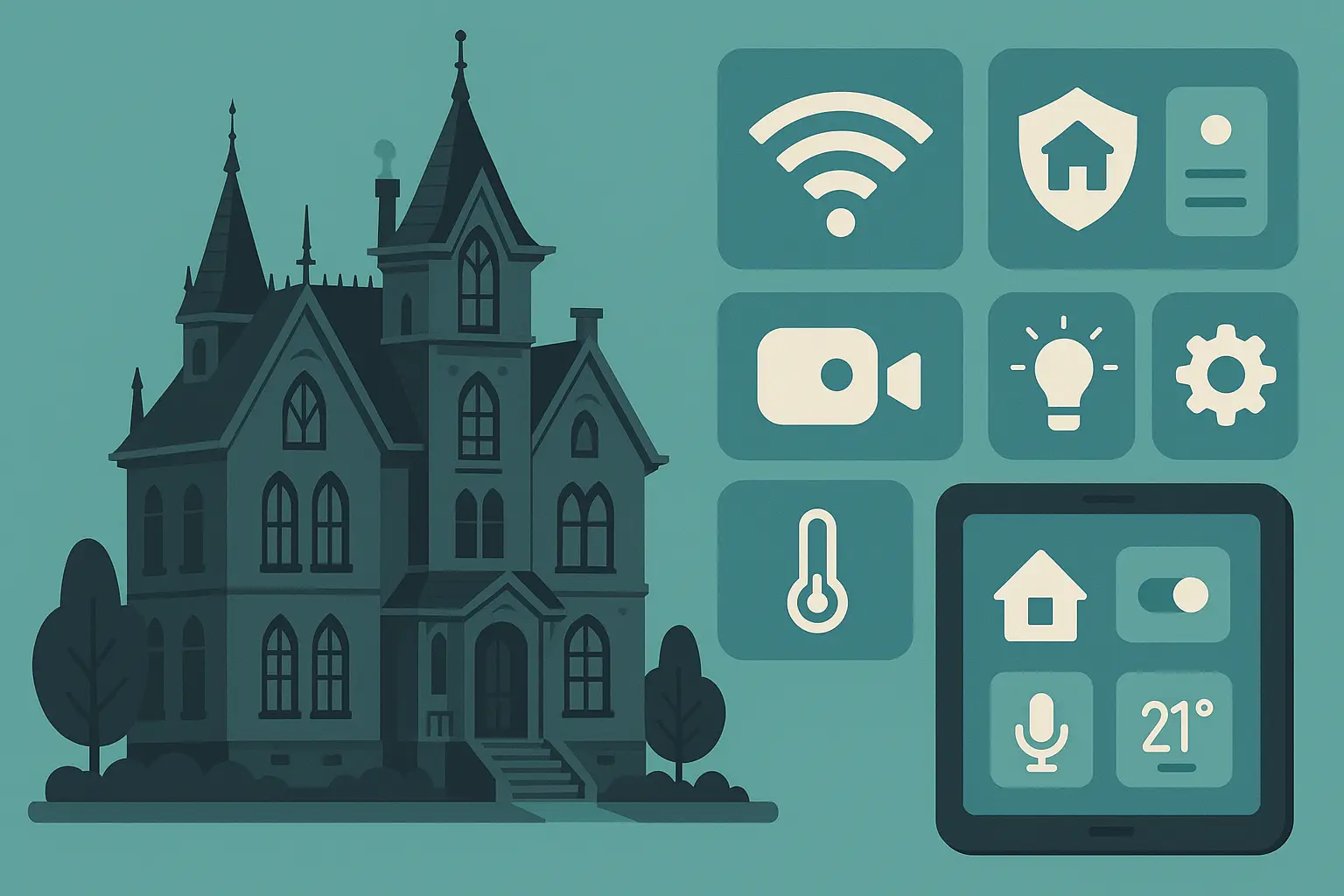
Stories about timeless human fears (death, isolation, losing yourself) stay relevant across generations. But the best contemporary horror finds fresh ways to explore these eternal themes through modern contexts and current cultural concerns.
Fresh Takes on Familiar Stuff
Readers want to be surprised, even within familiar horror setups. The most successful Halloween stories either put creative spins on classic monsters and scenarios or introduce completely new supernatural concepts that feel both fresh and believable.
Skip overused clichés unless you can twist them in unexpected directions. The “it was all a dream” ending, the “final girl” trope, or the “ancient burial ground” setup can work if you subvert them creatively. Otherwise, you’ll leave readers feeling cheated.
Stories That Stick With You
Great Halloween stories mess with your head long after you finish reading. They should make you feel something real—fear, unease, surprise, or even dark humor. The most effective stories create lasting psychological impressions that make you think twice about everyday situations.
Horror that relies only on shock value or gore typically doesn’t create lasting impact. Stories that build genuine dread through atmosphere, character development, and psychological tension tend to haunt readers much longer than those depending on graphic violence alone.
Good Writing Makes or Breaks Horror
Here’s the thing about horror—it’s all about the mood. If the writer can’t build that creepy atmosphere, the story falls flat, no matter how good the idea is. Bad pacing kills suspense faster than anything. Weak character development means readers won’t care what happens to the protagonists. Clunky dialogue breaks the spell completely.
Look for quality writing: sentence rhythm, word choice, sensory details, scene transitions. Horror needs precise language that suggests menace without spelling everything out, creating that feeling when your skin crawls and keeps readers turning pages.
25 Top Halloween Stories by Category
These 25 halloween stories represent some of the best examples across six horror types, each offering unique approaches to supernatural terror. From classic gothic mansions to futuristic digital nightmares, I’ve picked these stories for halloween to help you find exactly the type of scare you’re craving.
Classic Gothic Horror (Stories 1-5)
1. The Inheritance Manuscript
A young woman inherits her grandmother’s Victorian mansion, only to discover a hidden room containing manuscripts that predict future deaths in the town. Each story she reads comes true within days, and she realizes she must write the final tale—her own.
What makes this one work is watching the main character slowly realize she’s trapped in something way bigger and scarier than she thought. The Victorian setting gives you that classic gothic atmosphere while the predictive manuscripts create modern tension about fate versus free will.
2. The Midnight Groundskeeper
Every night at exactly midnight, residents of Willowbrook Cemetery report seeing an elderly man tending graves that don’t exist during daylight hours. When a local historian investigates, she discovers the groundskeeper died fifty years ago—and he’s been preparing plots for people who haven’t died yet.
Here’s what’ll mess with your head: you can’t tell if this ghost is trying to help people or if he’s the reason they’re dying. Either way, it’s creepy as hell.
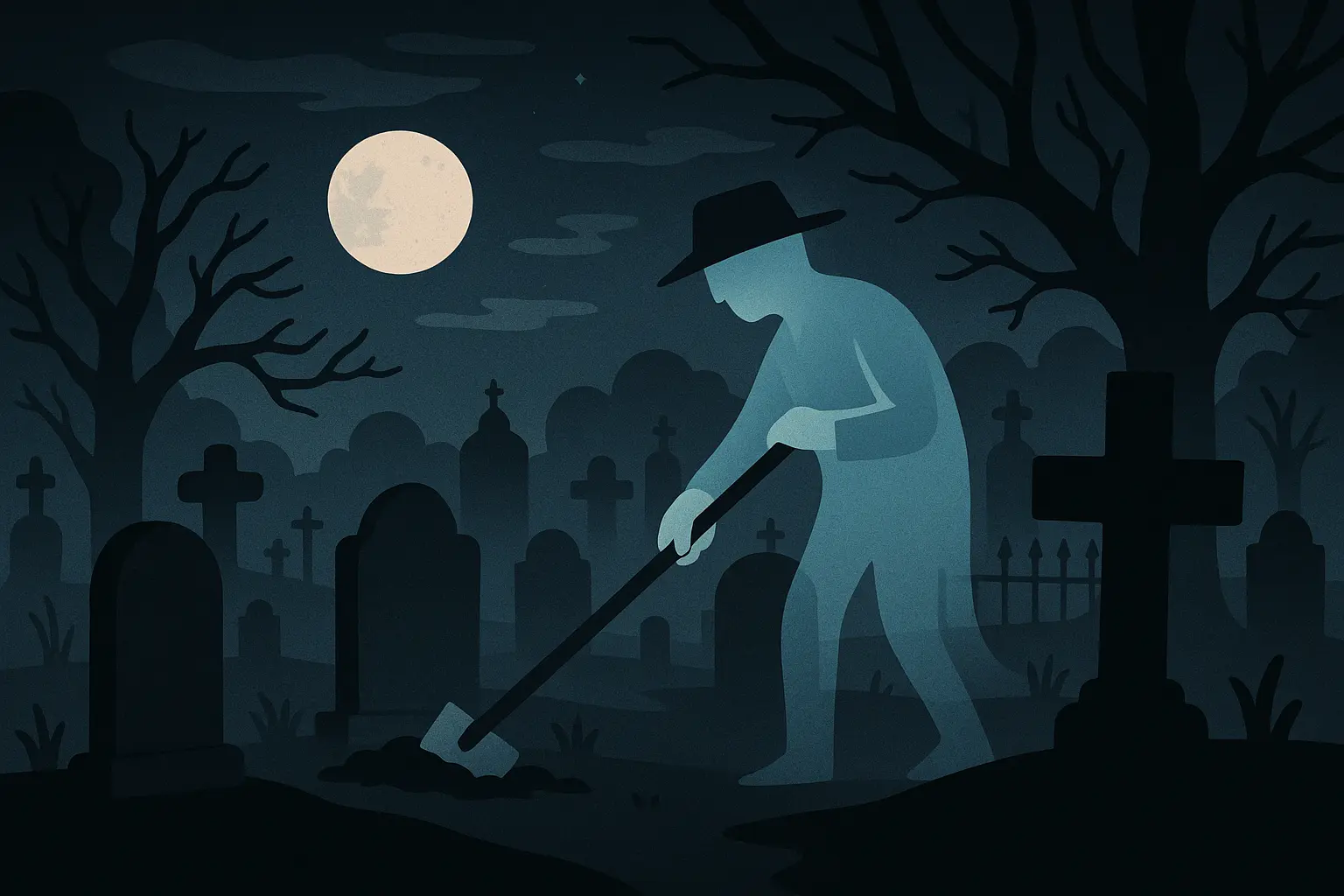
3. The Portrait Society
An exclusive art gallery features portraits that age while their subjects remain youthful. New members pay huge fees to have their portraits painted, not knowing they’re trading their natural aging process to the mysterious artist who hasn’t aged in centuries.
This Dorian Gray variation taps into universal fears about aging while offering a seemingly perfect solution with horrific consequences. Who wouldn’t want to stay young forever? But at what cost?
4. The Confession Booth
An abandoned church’s confession booth continues to operate despite having no priest. Visitors who confess their darkest secrets find themselves compelled to act out increasingly disturbing behaviors, as something ancient feeds on their guilt and shame.
Religious horror often feels unbelievable, but this one works by focusing on psychological manipulation rather than supernatural spectacle. The confession booth becomes a character itself, representing corrupted spiritual guidance.
5. The Music Box Ballerina
An antique music box with a porcelain ballerina appears in different homes throughout a small town. Each family reports the same thing: the ballerina dances on her own, and children begin sleepwalking to its melody, gathering in the town square at 3 AM.
This story combines childhood innocence with supernatural menace really effectively. The music box is both beautiful and sinister, creating that unsettling feeling when something lovely becomes threatening.
Psychological Horror (Stories 6-10)
6. The Memory Thief
A therapist specializing in trauma treatment discovers she’s been unconsciously absorbing her patients’ traumatic memories. As the stolen memories pile up, she begins experiencing multiple identities and can’t tell the difference between her life and her patients’ experiences.
This one explores what happens when trying to help others costs you your sense of self. The horror comes from losing yourself while genuinely wanting to help people—creating both personal and professional nightmare scenarios.
7. The Perfect Neighborhood
A family moves to an idyllic suburban community where everything seems too perfect. Gradually, they realize their neighbors are all previous versions of themselves from parallel timelines, and each family must eliminate the others to maintain their reality.
The multiverse concept lets you explore identity and the consequences of different choices. Each parallel family represents different life paths, forcing you to question your own decisions and wonder about alternate possibilities.
This works like Jordan Peele’s “Us” (2019), where doppelgangers represent suppressed aspects of identity. The suburban setting makes it worse because it corrupts the supposed safety of domestic life, making you question your own neighbors and community.
8. The Social Media Shadow
An influencer notices her online posts are being duplicated by an account with her exact photos and information, but slightly different captions. As she investigates, she discovers the duplicate account is posting her thoughts before she thinks them, suggesting something is living her life ahead of her.
This scary halloween stories entry captures contemporary anxieties about digital identity and social media authenticity. The horror comes from losing control over your online presence and questioning whether your thoughts are even your own.
9. The Night Shift Nurse
A hospital night nurse begins noticing that patients in room 237 always die during her shifts, despite arriving in stable condition. Her investigation reveals that she’s been unconsciously administering lethal doses while sleepwalking, controlled by the spirit of a previous nurse seeking revenge.
Medical horror works because hospitals represent both healing and death. The sleepwalking element removes conscious choice, creating horror through loss of control and corrupting professional identity.
10. The Reflection Thief
A woman notices her reflection in mirrors begins acting independently—first small gestures, then completely different actions. She discovers reflections worldwide are becoming sentient and planning to switch places with their human counterparts.
Mirror horror taps into fundamental fears about self-recognition and identity. The global scope turns personal horror into an existential threat, questioning the nature of consciousness and reality itself.
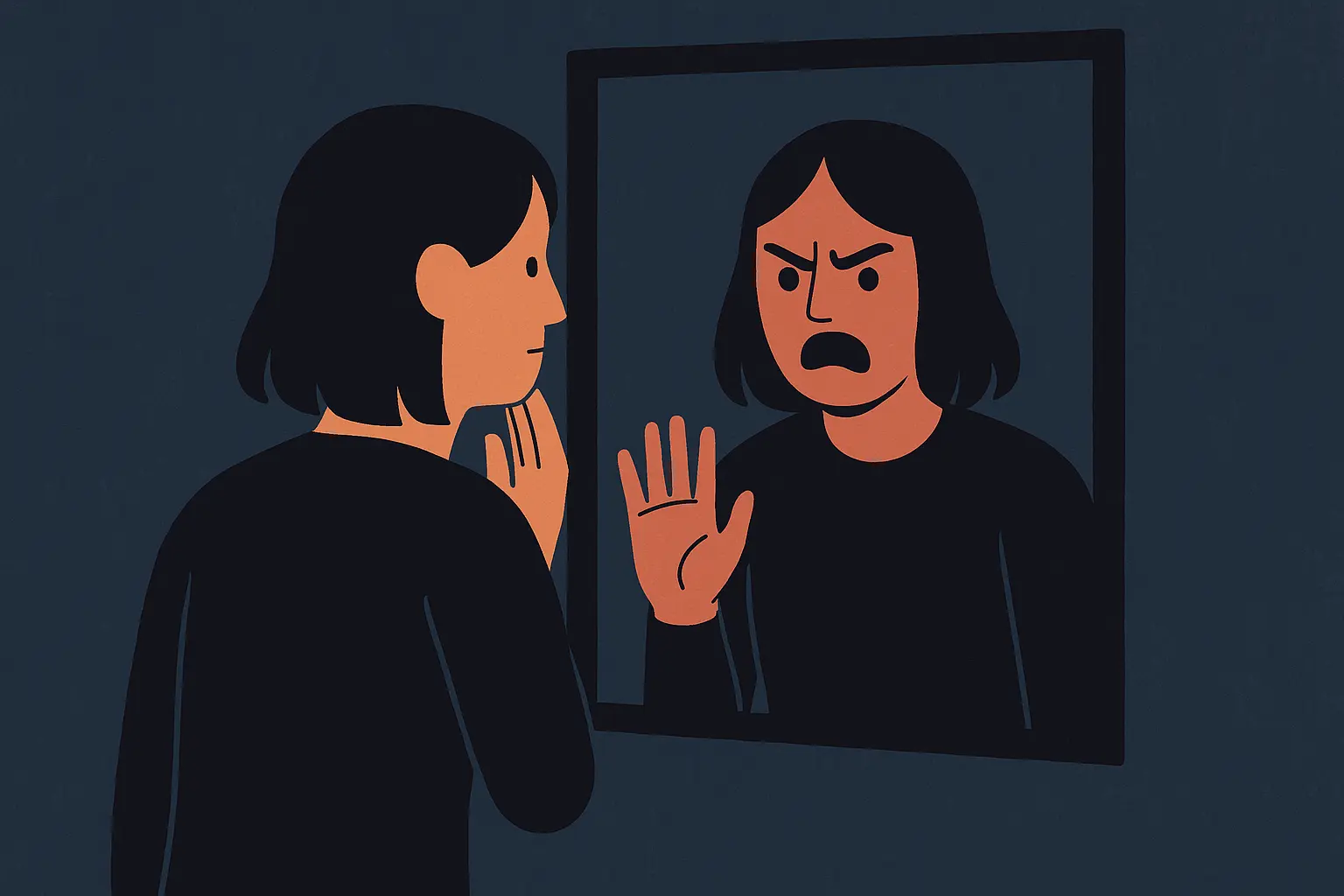
Modern Urban Horror (Stories 11-15)
11. The Delivery App Ghost
A food delivery driver receives orders from an address that burned down fifty years ago. Each delivery request comes with increasingly personal messages, and the driver realizes the ghost is trying to recreate its last family dinner before the fire that killed them all.
This modernizes traditional ghost stories through contemporary technology. The gig economy setting adds economic desperation to supernatural terror—the protagonist needs the money, which makes his choices more complex and relatable.
12. The Smart Home Haunting
A family’s AI-controlled smart home begins exhibiting behaviors that mirror a previous owner who died in the house. The system starts making decisions based on the dead person’s preferences, and the family realizes the ghost has learned to manipulate technology.
Technology horror works best when it explores our dependence rather than just malfunction. This succeeds by showing how smart homes know intimate details about our lives, making supernatural invasion more personal and invasive.
13. The Viral Video Curse
A group of friends creates a viral video that accidentally captures something supernatural in the background. Everyone who watches the video experiences the same terr ifying hallucinations, and the friends must find a way to delete something that’s already spread across the internet.
The story explores how digital content becomes impossible to control once released. The viral nature creates exponential horror—each view multiplies the supernatural threat, making containment impossible.
14. The Rideshare Passenger
A late-night rideshare driver keeps picking up the same passenger from different locations—a woman who died in a car accident on the route he drives. She’s trying to prevent other accidents, but her interventions are causing the very crashes she’s trying to stop.
This examines unintended consequences of good intentions. The ghost’s helpful nature makes her more sympathetic while creating moral complexity about intervention and fate.
15. The Dating App Doppelganger
A woman using dating apps discovers that someone with her exact photos and information is also active on the platforms, going on dates with men she’s never met. Her investigation leads her to discover she has a twin sister she never knew existed—who may not be entirely human.
Online dating anxiety meets identity horror in this contemporary tale. The story works because it explores real fears about digital deception while adding supernatural elements that question family history and human nature.
Supernatural Thriller (Stories 16-19)
16. The Storm Caller
During increasingly severe weather events, a meteorologist discovers she can influence storm patterns through her emotional state. As she learns to control this power, she realizes someone else with the same ability has been using weather as a weapon for decades.
Climate change anxiety meets supernatural thriller in this environmentally conscious horror story. The protagonist’s power creates both opportunity and responsibility, exploring themes of environmental stewardship and natural disaster causation.
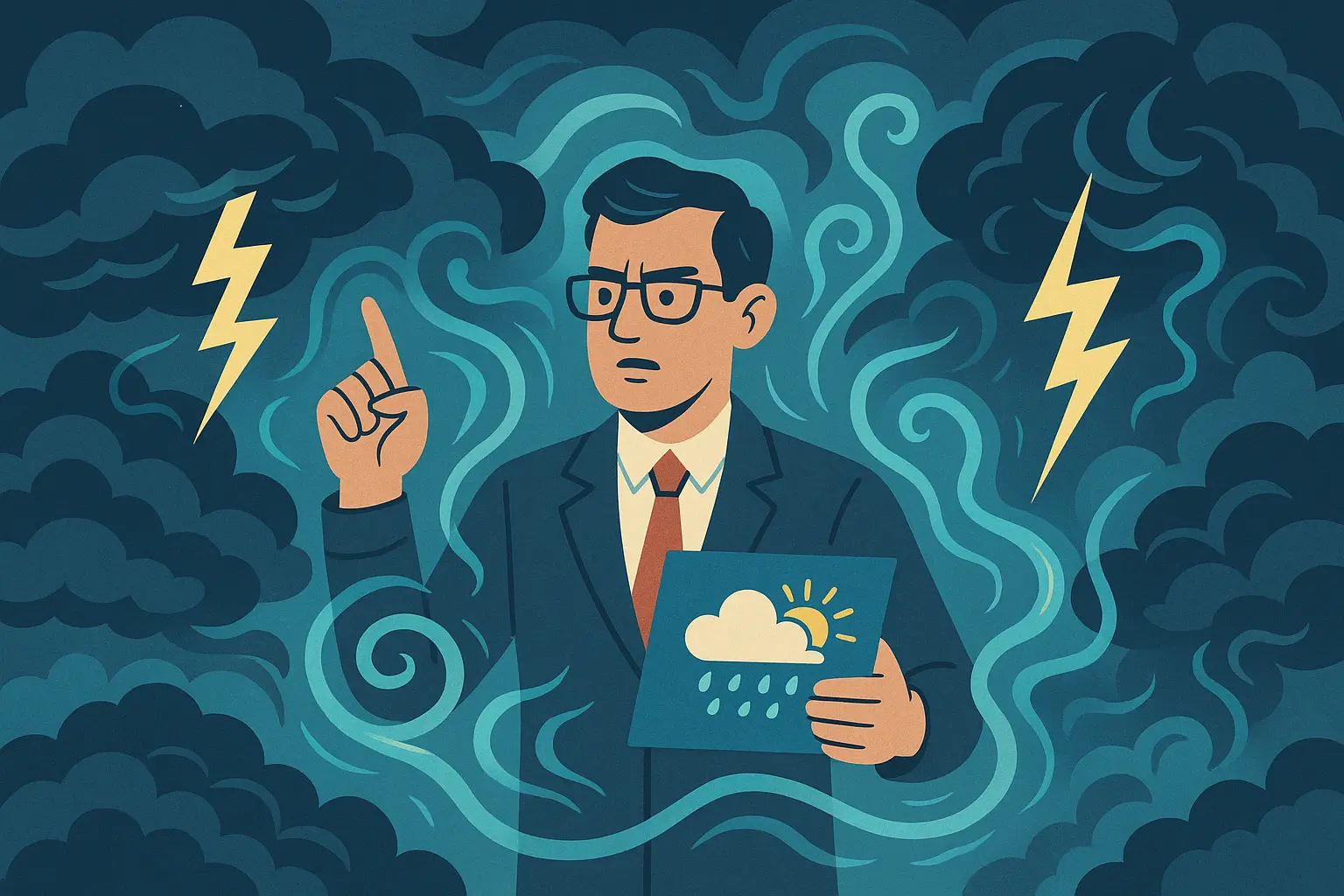
17. The Time Loop Cemetery
A cemetery groundskeeper becomes trapped in a time loop that resets every time someone is buried. To break free, she must solve a decades-old murder that’s somehow connected to the supernatural force controlling time in the graveyard.
Time loop stories need careful plotting to avoid repetition while building tension. This one works by using each reset to reveal new information about the central mystery, keeping things moving forward despite the temporal circularity.
18. The Dream Architect
An architect who designs buildings discovers her creations are appearing in people’s dreams before construction begins. When she realizes the dream buildings are trapping people’s sleeping minds, she must enter the dream realm to free them and stop the entity using her designs.
This operates on multiple reality levels, requiring careful world-building. The architectural element adds professional stakes to supernatural horror, exploring how creative work can be corrupted by otherworldly forces.
19. The Shadow Market
A late-night convenience store exists only between 2-3 AM, selling items that don’t exist in the real world. An insomniac customer becomes addicted to the impossible products and must find a way to escape before becoming permanently trapped in the shadow market’s reality.
Liminal spaces create natural horror settings. The convenience store represents mundane normalcy twisted into supernatural trap, exploring themes of consumer addiction and reality displacement.
Folk Horror & Mythology (Stories 20-22)
20. The Harvest Festival
A small farming town’s annual harvest festival has secretly been a ritual to appease an ancient entity that ensures good crops. When newcomers try to modernize the festival, the entity demands a more significant sacrifice, and the town must choose between tradition and survival.
Folk horror works best when it explores the tension between old ways and modern life. This classic halloween tale examines how communities maintain dangerous traditions and the cost of abandoning protective rituals.
The rich tradition of folk horror draws heavily from folktale story examples that have been passed down through generations, often containing dark truths about human nature and ancient fears.
21. The Forest Whispers
Hikers in a national forest report hearing their names called by voices that sound like deceased relatives. A park ranger investigating the phenomena discovers the forest is a thin place between worlds, where the dead try to lure the living into joining them.
Natural settings work great for horror because they’re simultaneously beautiful and dangerous. The story uses familiar hiking experiences to create relatable terror while exploring themes of grief and letting go.
22. The Lighthouse Keeper’s Daughter
An automated lighthouse begins operating manually during storms, guided by the ghost of a keeper’s daughter who died trying to save ships. Modern ships’ GPS systems are failing during her interventions, and investigators must determine whether she’s helping or hindering maritime safety.
This balances historical tragedy with modern technology conflicts. The ghost’s helpful intentions create moral complexity—her outdated methods may cause more harm than good in contemporary maritime navigation.
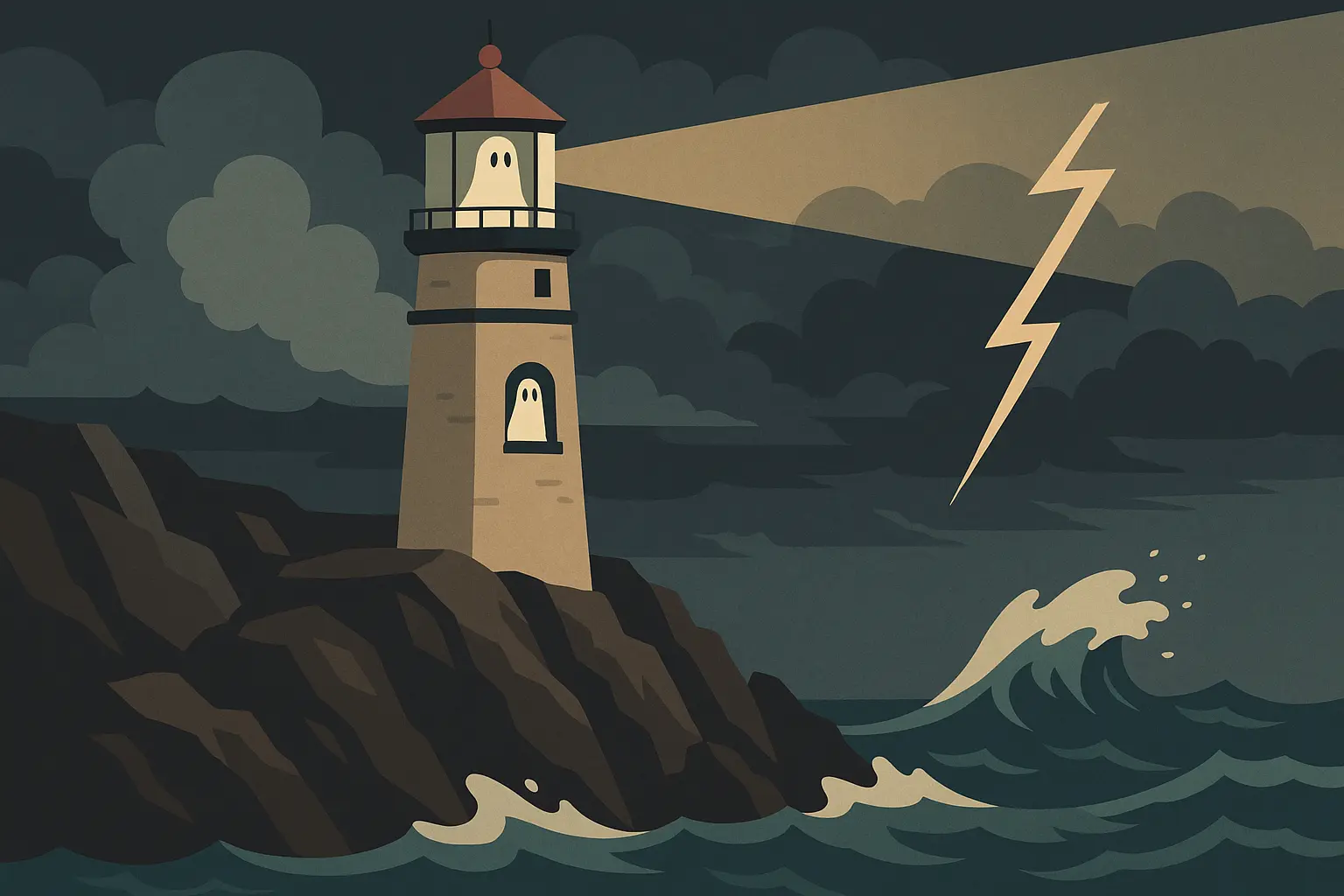
Sci-Fi Horror (Stories 23-25)
23. The Memory Upload
A company offering digital consciousness preservation after death discovers that uploaded minds are experiencing a shared nightmare reality. The uploaded consciousnesses are trying to communicate with the living world to warn them about something terrible waiting in the digital afterlife.
Digital immortality horror explores what happens when technology promises transcend human limitations. The story questions whether consciousness can truly be preserved or if digital existence creates new forms of suffering.
24. The Genetic Echo
A genetic testing company discovers that certain DNA sequences are actually dormant code that activates supernatural abilities. As more people unlock these abilities through testing, they realize the code was planted by an ancient civilization that’s preparing to return.
This combines body horror with cosmic horror, exploring themes of human evolution and ancient astronaut theories. The genetic testing element makes the horror feel immediate and personally threatening to contemporary readers.
25. The Signal from Tomorrow
A radio astronomer receives signals from space that contain detailed information about future events on Earth. As she tries to prevent the disasters described in the signals, she realizes the transmissions are coming from Earth’s future—and she’s the one sending them.
Time paradox horror creates excellent psychological tension. The story explores free will versus determinism while questioning whether knowledge of the future creates or prevents catastrophic events. The protagonist becomes trapped in a causal loop where her attempts to help may cause the very disasters she’s trying to prevent.
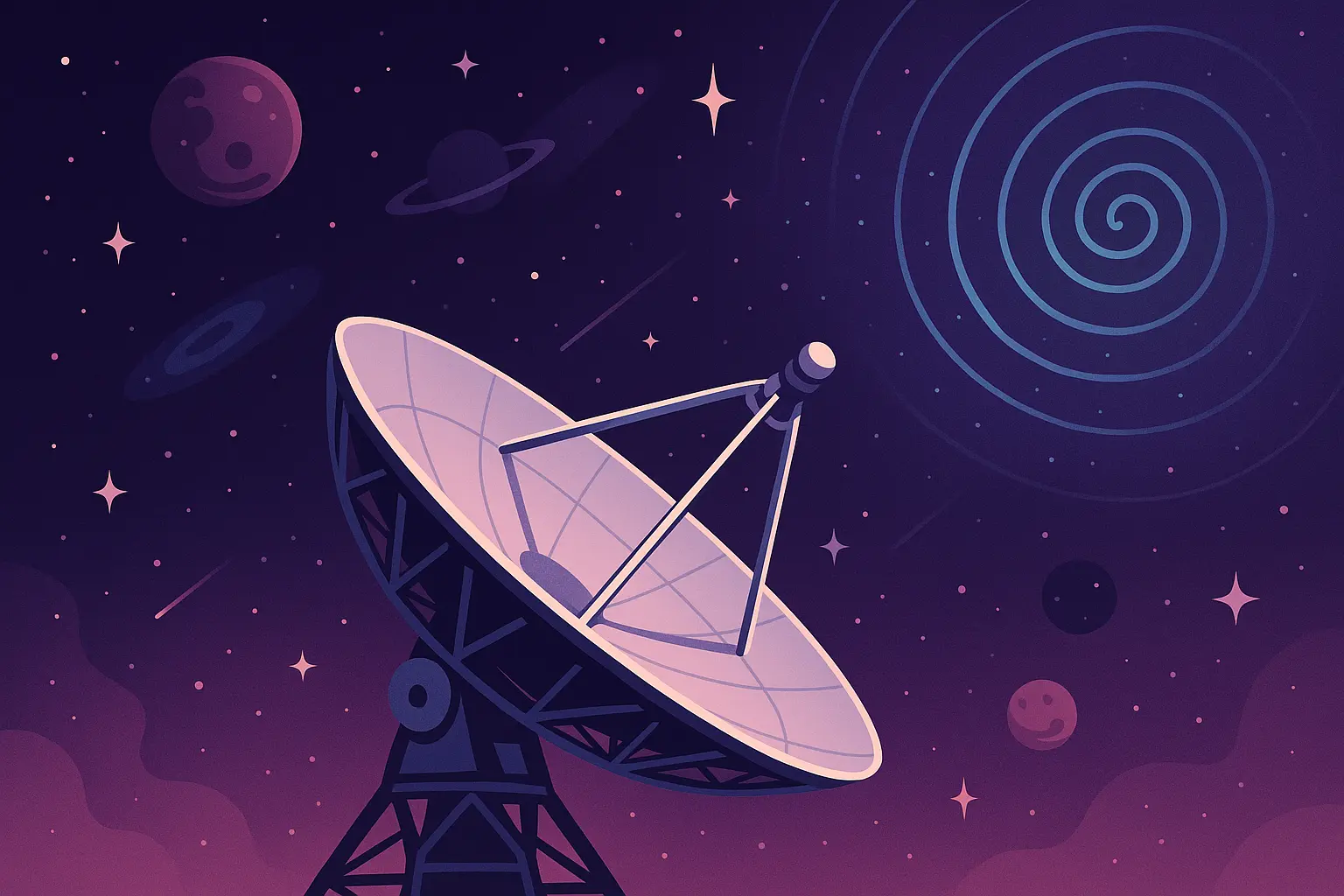
How to Evaluate Halloween Stories Like a Pro
Want to know if a Halloween story’s any good? It comes down to analyzing content appropriateness, how the story’s put together, what it’s really about, originality, emotional impact, and technical craft. Understanding these things helps you identify stories that’ll resonate with specific audiences and stick with you long-term.
| Story Category | What They Do Best | How Long They Should Be | Who They’re For |
|---|---|---|---|
| Classic Gothic | Creepy atmosphere, timeless themes | 3,000-8,000 words | Literary horror fans, traditionalists |
| Psychological Horror | Character depth, lingering unease | 2,000-10,000 words | Adult readers, thriller enthusiasts |
| Modern Urban Horror | Contemporary relevance, relatable fears | 1,500-5,000 words | General audiences, social media sharing |
| Supernatural Thriller | Fast pacing, supernatural action | 4,000-12,000 words | Adventure readers, paranormal fans |
| Folk Horror | Cultural depth, community themes | 3,000-7,000 words | Literary audiences, mythology lovers |
| Sci-Fi Horror | Conceptual innovation, future fears | 2,500-8,000 words | Genre fans, technology-minded readers |
Content Appropriateness Analysis
Heavy adult content stories like “The Memory Thief” and “The Genetic Echo” deal with complex themes of identity dissolution and body horror that need mature audiences. These work best for literary horror publications and adult readers who can appreciate psychological complexity without being overwhelmed.
Universal appeal stories like “The Delivery App Ghost” and “The Smart Home Haunting” use familiar technology fears accessible to broad audiences while maintaining genuine scares. They’re perfect for mainstream horror anthologies and digital platforms seeking wide demographic reach.
Family-friendly options like “The Forest Whispers” and “The Lighthouse Keeper’s Daughter” rely on atmosphere and mystery rather than graphic content. These scary halloween stories suit young adult audiences and family horror collections where suspense matters more than shock value.
Story Structure Assessment
Flash fiction ready stories like “The Music Box Ballerina” and “The Reflection Thief” work perfectly as 500-1000 word pieces. They feature single, focused supernatural concepts that create immediate impact without requiring extensive character development or world-building.
Writers crafting these compact narratives can benefit from studying short story examples that demonstrate how to create maximum emotional impact within strict word limits.
Stories with novella potential like “The Perfect Neighborhood” and “The Dream Architect” contain enough complexity to sustain longer formats. These include rich world-building and character development suitable for standalone publications or anthology centerpieces.
Series potential stories like “The Signal from Tomorrow” and “The Harvest Festival” establish mythologies that could support multiple interconnected halloween stories. They create universes rich enough for expanded development across various media formats.
Originality & Cultural Relevance
Fresh takes on classics include “The Social Media Shadow” and “The Delivery App Ghost,” which modernize traditional doppelganger and residual haunting concepts using contemporary technology and social media anxieties. These stories feel both familiar and innovative.
“The Smart Home Haunting” is a perfect example of successful modernization—taking the classic haunted house and filtering it through smart home technology. Instead of doors slamming and lights flickering randomly, the ghost manipulates thermostats, security systems, and voice assistants—creating horror that feels both supernatural and technologically plausible.
Contemporary fears appear in stories addressing AI consciousness (“The Smart Home Haunting”), genetic manipulation (“The Genetic Echo”), and digital identity (“The Memory Upload”). They tap into current technological anxieties while maintaining supernatural elements that transcend temporary trends.
Timeless themes emerge in gothic stories like “The Portrait Society” and “The Confession Booth,” which use eternal human fears about aging, guilt, and moral corruption. These remain relevant across generations because they address fundamental human concerns.
Emotional Impact Evaluation
Psychological unease stories like “The Perfect Neighborhood” and “The Night Shift Nurse” create lasting discomfort by questioning reality and personal agency. They leave readers examining their own perceptions and behaviors long after finishing the story.
Existential dread appears in “The Memory Upload” and “The Signal from Tomorrow,” generating profound anxiety about consciousness, death, and free will. These stories extend their impact far beyond the reading experience by challenging fundamental assumptions about existence.
That creepy mood builds in “The Midnight Groundskeeper” and “The Storm Caller” through sustained atmosphere and foreboding. They create immersive reading experiences perfect for Halloween without relying on jump scares or graphic violence.
Technical Craft Assessment
Pacing excellence appears in stories like “The Time Loop Cemetery” and “The Viral Video Curse,” which demonstrate masterful tension building through escalating supernatural events. These maintain reader engagement through carefully controlled revelation of information and mounting dread.
Character development efficiency shows in flash fiction pieces like “The Midnight Groundskeeper” and “The Delivery App Ghost.” Character development happens quickly while maintaining depth through specific, telling details rather than extensive backstory.
That creepy atmosphere really shines in the strongest entries like “The Forest Whispers” and “The Lighthouse Keeper’s Daughter.” These excel at creating immersive environments where the setting becomes almost a character itself—essential for effective horror storytelling.
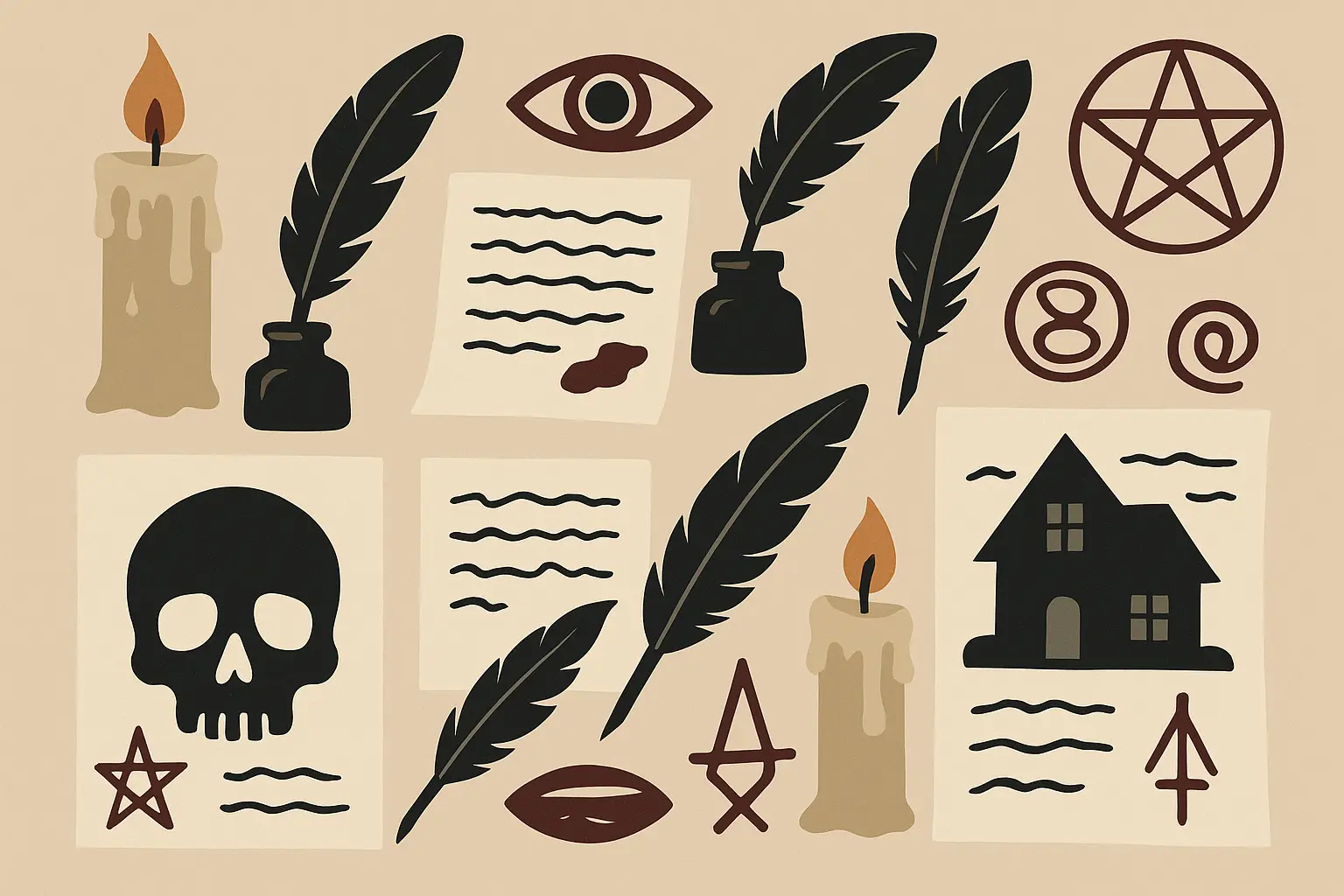
Story Examples and Deep-Dive Analysis
Let me break down some specific examples to show you exactly what makes these stories work. These examples demonstrate how successful Halloween stories balance familiar elements with innovative approaches, using precise language, pacing, and atmospheric details to create lasting psychological impact. I’ve chosen these stories for halloween to showcase the craft behind memorable horror writing.
Simple Story Examples
The Music Box Ballerina (Classic Gothic)
Opening: “Sarah found the music box at her grandmother’s estate sale, its porcelain ballerina frozen mid-pirouette. The seller, an elderly woman with nervous eyes, practically gave it away. ‘Please,’ she whispered, ‘just take it far from here.'”
This opening hooks you immediately through the seller’s desperate behavior and the music box’s beautiful yet ominous presence. The contrast between the delicate ballerina and the woman’s fear creates that unsettling feeling that makes you want to keep reading.
The story works through escalating supernatural events that feel both magical and menacing. Children’s sleepwalking adds parental anxiety while the 3 AM gathering time taps into universal fears about the witching hour.
The Social Media Shadow (Psychological Horror)
Key Scene: “Emma stared at her phone in disbelief. @RealEmmaJones had posted a photo of her morning coffee—the same cup, same table, same lighting—but Emma hadn’t posted anything yet. The timestamp showed 8:47 AM. Her clock read 8:46 AM.”
This scene works because it uses specific, relatable details (morning coffee, exact timestamps) to create supernatural impossibility. The one-minute time difference makes the phenomenon feel immediate and threatening rather than abstract.
The story taps into contemporary anxieties about digital identity theft while adding supernatural elements that question the nature of consciousness and prediction. You can easily imagine experiencing this scenario yourself.
The Delivery App Ghost (Modern Urban Horror)
Atmospheric Detail: “The GPS led Marcus down Elm Street to where house number 247 should have been. Instead, he found an empty lot overgrown with weeds. His phone buzzed: ‘Please ring doorbell. Family’s waiting for dinner. —Margaret'”
This passage creates horror through the contrast between technological precision (GPS navigation) and supernatural impossibility (delivering to a nonexistent address). The personal message from Margaret adds emotional weight to the ghostly encounter.
The gig economy setting makes the protagonist’s dilemma more complex—he needs the money but faces increasingly disturbing supernatural requests. Economic desperation adds realistic stakes to supernatural horror.
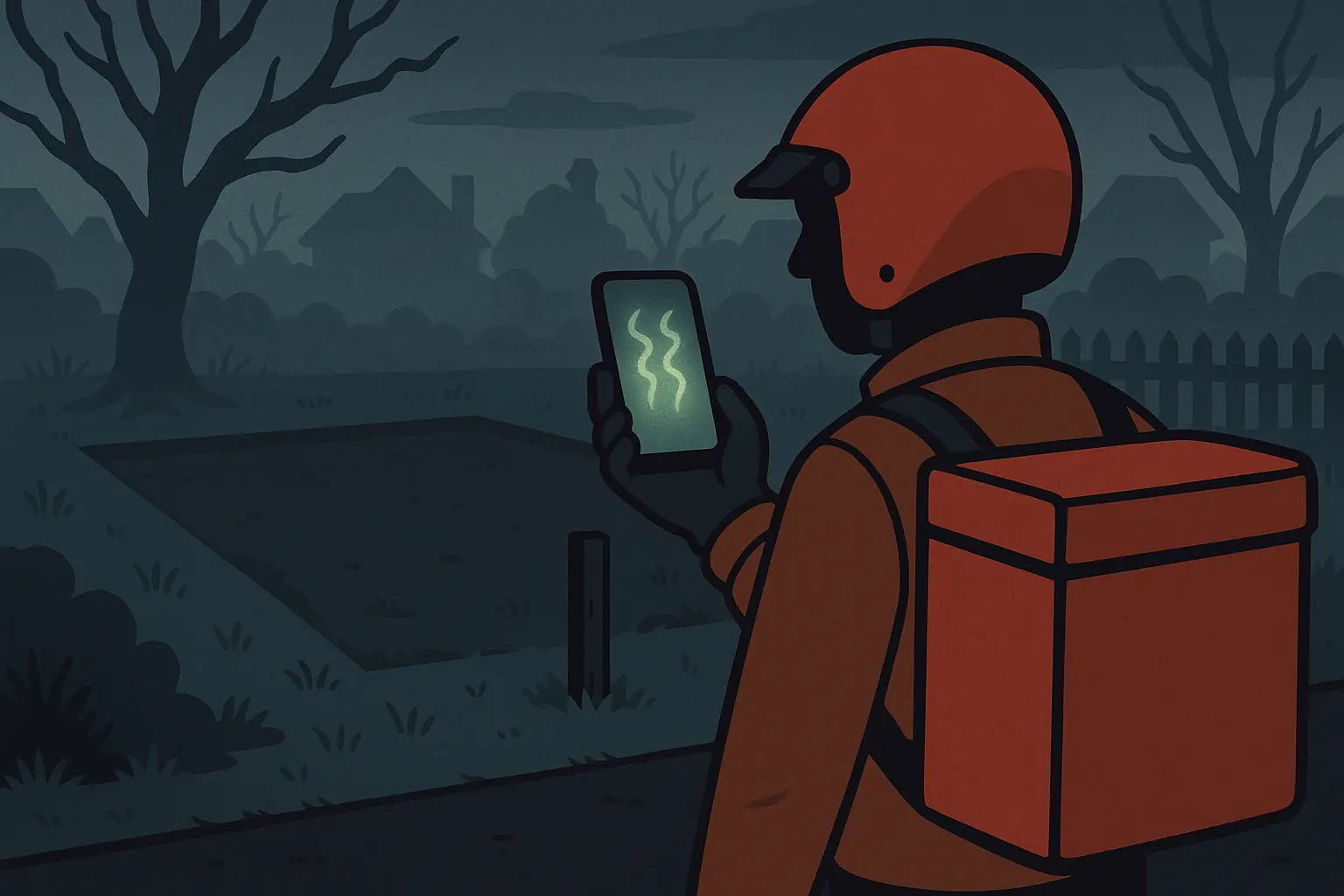
Complex Story Details
The Dream Architect (Supernatural Thriller)
This story operates on multiple reality levels, requiring careful world-building to keep readers oriented. The protagonist, Elena, discovers her architectural blueprints manifest in the collective unconscious, creating buildings that exist only in dreams but trap real consciousness.
The story structure alternates between waking reality, where Elena practices conventional architecture, and the dream realm, where her buildings become psychological prisons. This dual-reality approach allows exploration of creativity’s dark potential and the responsibility artists bear for their work’s impact.
Key plot points include Elena’s discovery that her mentor has been using her abilities for decades, the revelation that certain historical buildings were designed as consciousness traps, and the climactic sequence where Elena must redesign reality itself from within the dream realm.
The horror emerges from the realization that consciousness itself can be architecturally designed and manipulated. Elena’s professional skills become both weapon and weakness, forcing her to question whether her creative work helps or harms humanity.
The Genetic Echo (Sci-Fi Horror)
This story combines body horror with cosmic horror, exploring themes of human evolution and ancient astronaut theories. The narrative follows Dr. Sarah Chen, a geneticist who discovers that specific DNA sequences—previously dismissed as “junk DNA”—contain compressed information that activates dormant psychic abilities.
As more people undergo genetic testing and unknowingly activate these sequences, they begin experiencing shared visions of an ancient civilization that seeded Earth with modified humans. The horror escalates as the activated individuals realize they’re being prepared as vessels for the returning ancient beings.
The story works because it grounds fantastic concepts in real scientific terminology and procedures. Genetic testing feels familiar and safe to most readers, making the supernatural revelations more shocking and believable.
Enhanced abilities come with a terrible cost: gradual loss of individual consciousness as activated humans become part of a hive mind. This creates both personal horror (losing oneself) and species-level terror (humanity’s potential extinction through assimilation).
The ancient civilization element adds cosmic horror scope while the genetic manipulation provides body horror intimacy. Readers fear both the vast unknown and the violation of their own biological integrity.
| Horror Technique | Example Story | Effect on Reader | Best Used For |
|---|---|---|---|
| Beautiful/Sinister Contrast | The Music Box Ballerina | Creates unease through cognitive dissonance | Classic gothic, atmospheric horror |
| Time Displacement | The Social Media Shadow | Questions reality and free will | Psychological horror, sci-fi horror |
| Economic Stakes | The Delivery App Ghost | Adds realistic pressure to supernatural choices | Modern urban horror, relatable protagonists |
| Professional Corruption | The Night Shift Nurse | Undermines trusted institutions | Medical horror, psychological thrillers |
| Technology Dependence | The Smart Home Haunting | Exploits modern lifestyle vulnerabilities | Contemporary horror, tech-savvy audiences |
Final Thoughts
These 25 Halloween stories represent some of the finest examples of contemporary horror storytelling, each offering unique approaches to supernatural terror while addressing both timeless fears and modern anxieties. From classic gothic mansions harboring deadly secrets to futuristic digital nightmares that question the nature of consciousness itself, these carefully curated tales demonstrate the incredible range and sophistication possible within horror fiction.
The key to picking effective Halloween stories lies in understanding your audience, recognizing quality craft, and appreciating how the best horror writers balance familiar elements with innovative twists. Whether you’re seeking gentle atmospheric chills or mind-bending psychological terror, the stories in this collection provide excellent starting points for exploring the rich landscape of contemporary horror literature.
Remember that the most memorable Halloween stories don’t just scare—they stick with you, making you question everyday situations and examine the shadows in your own life. They transform ordinary experiences into potential sources of wonder and terror, reminding us that the supernatural might be closer than we think. The best horror stories don’t just entertain; they expand our understanding of fear, mortality, and what it means to be human in an uncertain world.
Bottom line? Good scary stories don’t just make you jump—they change how you see the world, even if it’s just for a little while. They make you wonder “what if?” And honestly, isn’t that what Halloween’s all about?
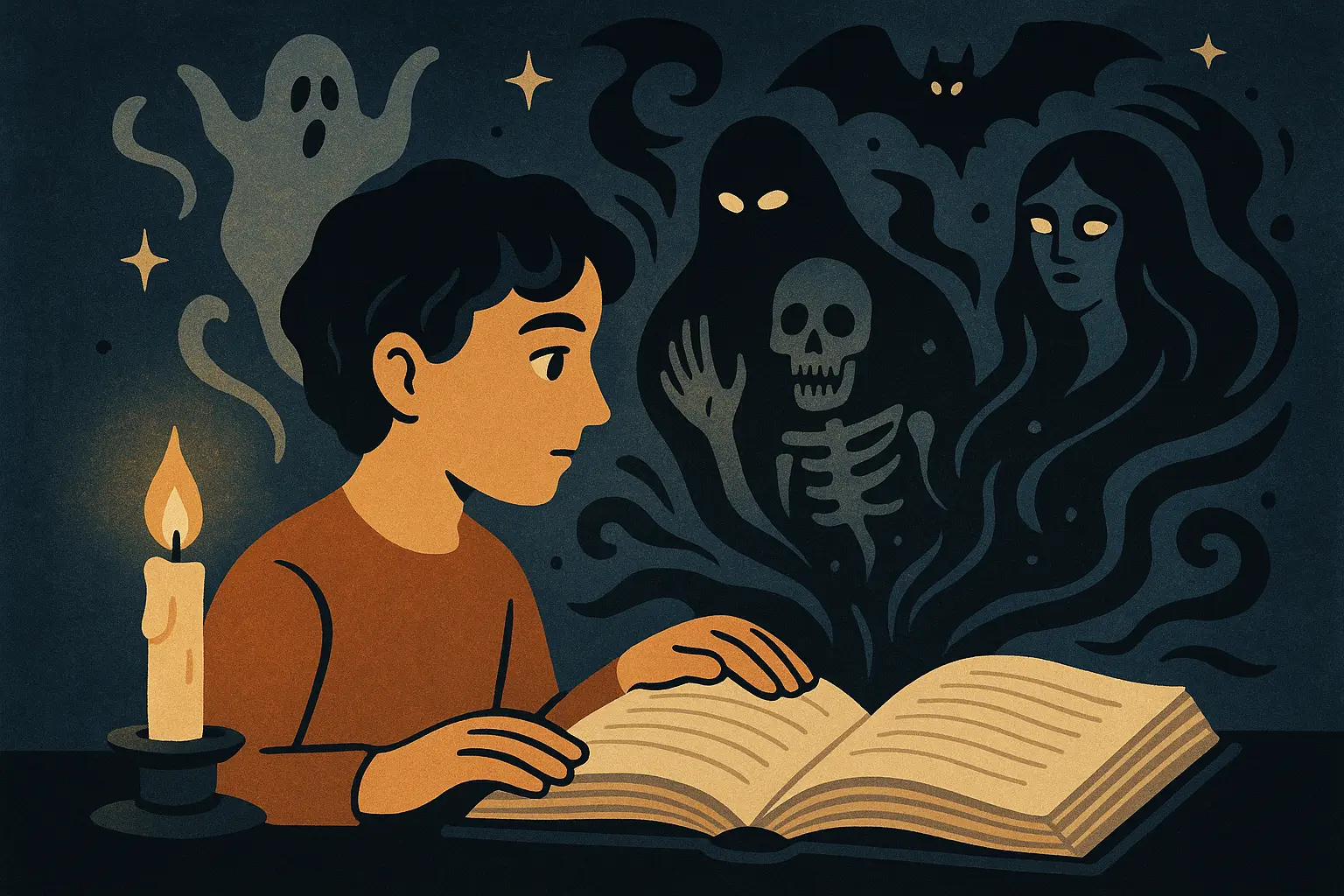



Add comment